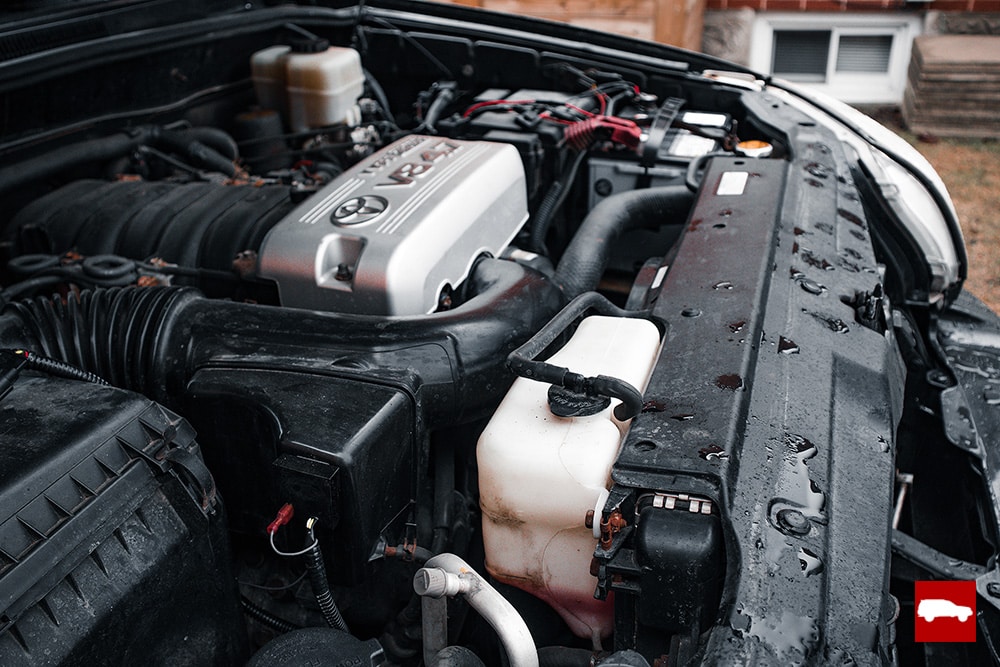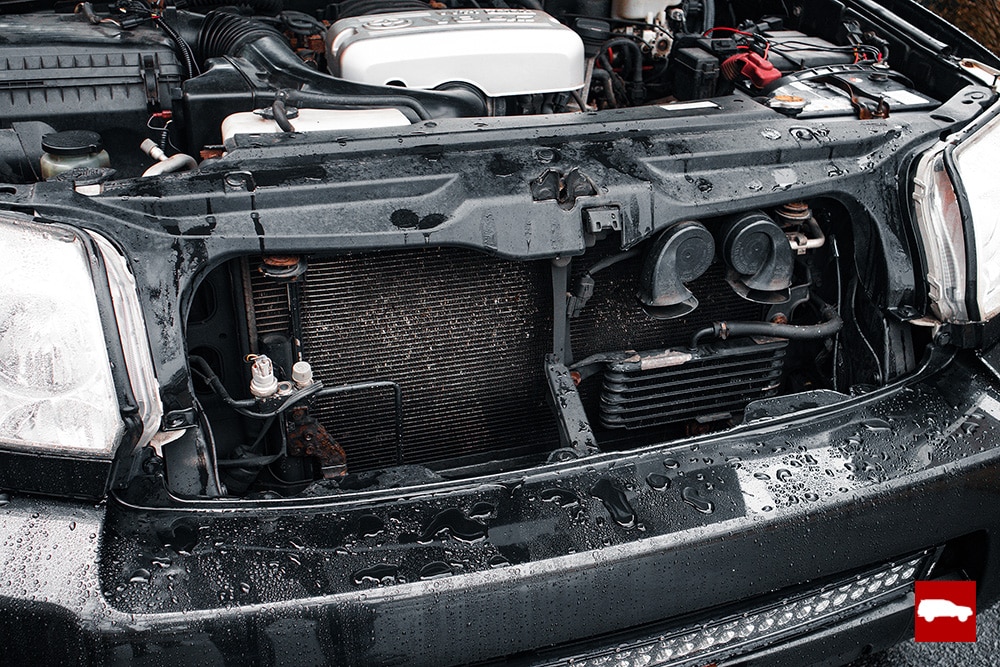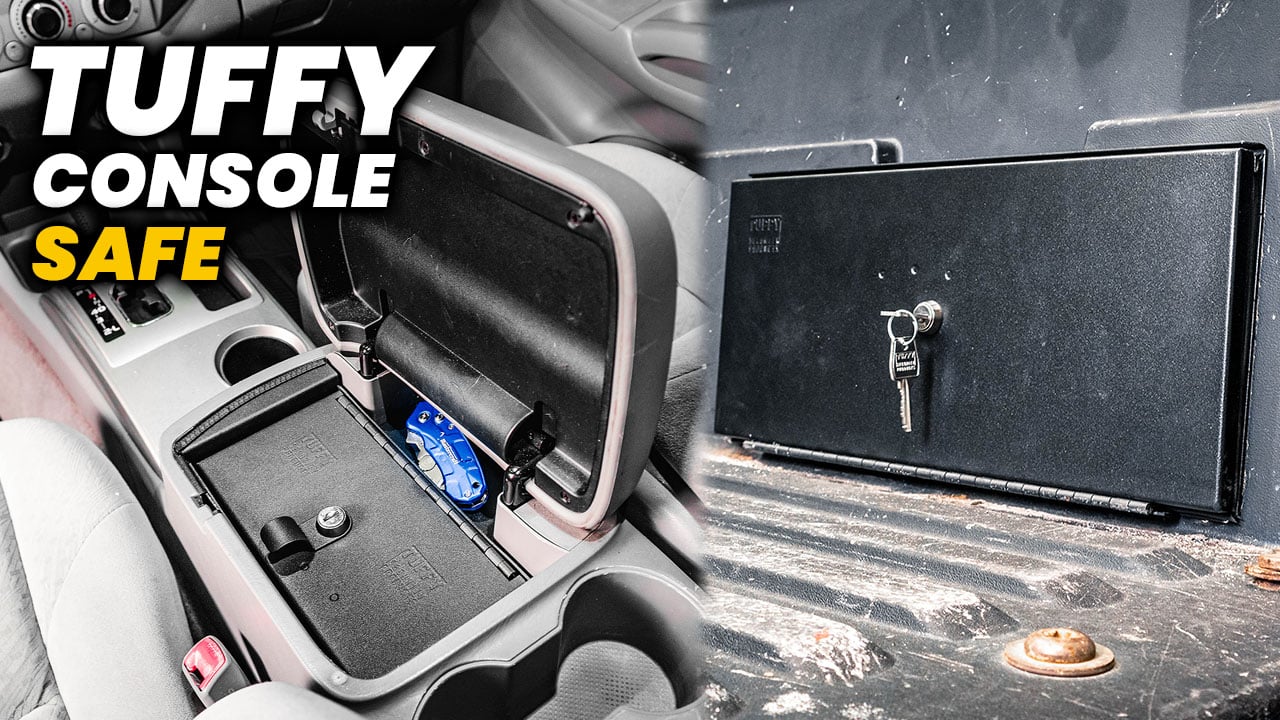Most enthusiasts know the importance of staying on top of regular vehicle maintenance. The engine oil has to be replaced frequently and the drivetrain fluids need to be checked regularly and replaced at the proper intervals to ensure everything stays lubricated and operating at the proper temperature.
Those are the easy-to-remember maintenance items. However, your engine’s coolant may be forgotten when going about making your maintenance checklist. We know that our oil and lubricants break down over time and lose their lubricity.
Engine coolant is no different. The rust inhibitors in coolant lose their ability to protect your cooling system over time and need to be replaced periodically.
Coolant has three main jobs – the first and most obvious job is cooling the engine. On top of that, it also protects your engine and radiator from rusting. It also has to act as a lubricant to keep your water pump spinning smoothly for thousands of kilometers all without causing damage to your water pump seal.

4runner coolant flush intervals
Whether you prefer to tackle vehicle maintenance on your own or just have a professional handle it, it’s good for you to know when it should be done. It’s also not an expensive service so the cost of having the service performed far outweighs any perceived benefit of stretching the interval.
As technology has improved the intervals have gotten further apart further enhancing the affordability of a coolant flush.
| 1984-2003 Models | 2004 Models | 2005-2009 Models | 2010-Present Models | |
|---|---|---|---|---|
| Interval | 20,000 miles (32,000 km) Or every 2 years | 40,000 miles (65,000 km) Or every 5 years | 80,000 miles (128,000 km) for the first 10 years Every 40,000 miles (65,000 km) Or every 5 years after that | 100,000 miles (160,000 km) for the first 10 years Every 50,000 miles (80,000 km) Or every 5 years after that |
Up to 2003
4Runners built before 2003 use IAT (inorganic acid technology) coolant, more on this later. The service interval on these vehicles is every 32,000 km or every two years.
2004
For the 2004 model year, Toyota recommends replacing the engine coolant every 65,000 km or every 5 years.
2005 to 2009
From 2005 to 2009 Toyota recommends replacing engine coolant at 128,000 or 10 years for the first time, then every 65,000 km or 5 years whichever comes first.
2010 to 2023
From 2010 to the current model year 4Runner Toyota recommends replacing the engine coolant for the first time at 160,000 km or 10 years, then every 80,000 km or every 5 years.
These intervals are all based on the way an average person drives their vehicle. Towing, off-roading, and extreme heat are just a few factors that might change how early you flush your cooling system. If you’re approaching your interval or you think your 4Runner might be running hotter than usual, you can always test your coolant or have your technician test it.
Any shop should have a hydrometer or refractometer to measure the specific gravity of your coolant and let you know if you should look at replacing it shortly. A hydrometer like this one can also be picked up quite affordably.
For a few extra dollars, you could grab a refractometer. I personally prefer the refractometer. It will produce a more accurate reading and many have scales for coolant, battery acid, and diesel exhaust fluid.

What coolant to use in your 4runner
In 2004 Toyota introduced its Super Long Life coolant which replaced the Long Life coolant. Long Life coolant was an inorganic acid technology (IAT) coolant that was dyed red. IAT coolant offered great corrosion resistance but had a shorter life span than Super Long Life coolant which is a hybrid organic acid technology (HOAT) coolant.
Switching over to Super Long Life coolant is the main reason the service intervals were able to be lengthened in 2004 and further yet in more recent years. Aside from lasting longer before it begins to break down, Super Long Life coolant is more environmentally friendly. This made the switch over an obvious choice.
Some say you can run Super Long Life coolant in 4Runners made before 2004 and that your interval will then be more in line with the newer vehicles. This may be true, however, from the research I’ve done, I wasn’t able to find anything directly from Toyota to support this claim.
I would be more inclined to play it safe and just stick to the coolant and service intervals suggested by Toyota.
What happens if you don’t flush your coolant
It may be tempting to ignore the service interval or forget to replace it altogether. I would strongly oppose this way of thought. Regularly flushing your coolant system is vital for several reasons.
As previously stated coolant can break down over time, which could lead to a number of issues. The first and possibly largest problem you might run into would be overheating. Overheating your engine will drastically reduce its longevity. Cylinder heads can warp causing head gasket failure, and excessive heat can also cause engine bearings to fail prematurely.
Over time the protection built into the coolant begins to break down. This can lead to coolant leaks as the rubber hoses and gaskets begin to deteriorate. It can also lead to corrosion build-up in the radiator, engine block, and heater core.

Corrosion build-up can restrict the coolant flow and reduce the contact area with the coolant causing the engine to overheat. It will also produce insufficient heat in the cabin since hot coolant flowing through the heater core is how the vehicle’s interior is heated up.
Simply draining the old coolant and refilling with a fresh supply is acceptable, however, there will always be a little bit of old coolant left in the engine block, radiator, and hoses. There is a simple way to reduce the amount of old coolant in the system without investing in a coolant flushing machine.
Simply drain the old coolant and fill the system with fresh coolant – using a vacuum fill tool is the best way to ensure there are no air pockets in the system. If you don’t have access to a vacuum fill tool a coolant funnel will allow air to escape and coolant to take its place while running the vehicle.
After the system is filled, go for a drive to bring the engine to operating temperature. This will allow the thermostat to open, circulating the coolant through the system. When you get back to your workstation, simply drain the coolant again and refill the radiator with fresh coolant.
Some will recommend using a flushing solution or flushing the radiator and engine block with water. Since there is no way to make sure all the flushing solution or water is drained from the cooling system, I’m a bit apprehensive about trusting these methods.
Final Word
The message here is pretty simple – don’t neglect the coolant in your 4runner! Engine oil isn’t the only fluid that is important to stay on top of and if you want your 4runner to last forever, these maintenance items are a cheap investment.

Jeremy got his start in the automotive industry in 2012 as a detailer. He also tried sales and a role in the service department at a Chrysler dealership before deciding to become an automotive technician for Volkswagen. Read more about Jeremy:





Leave a Reply